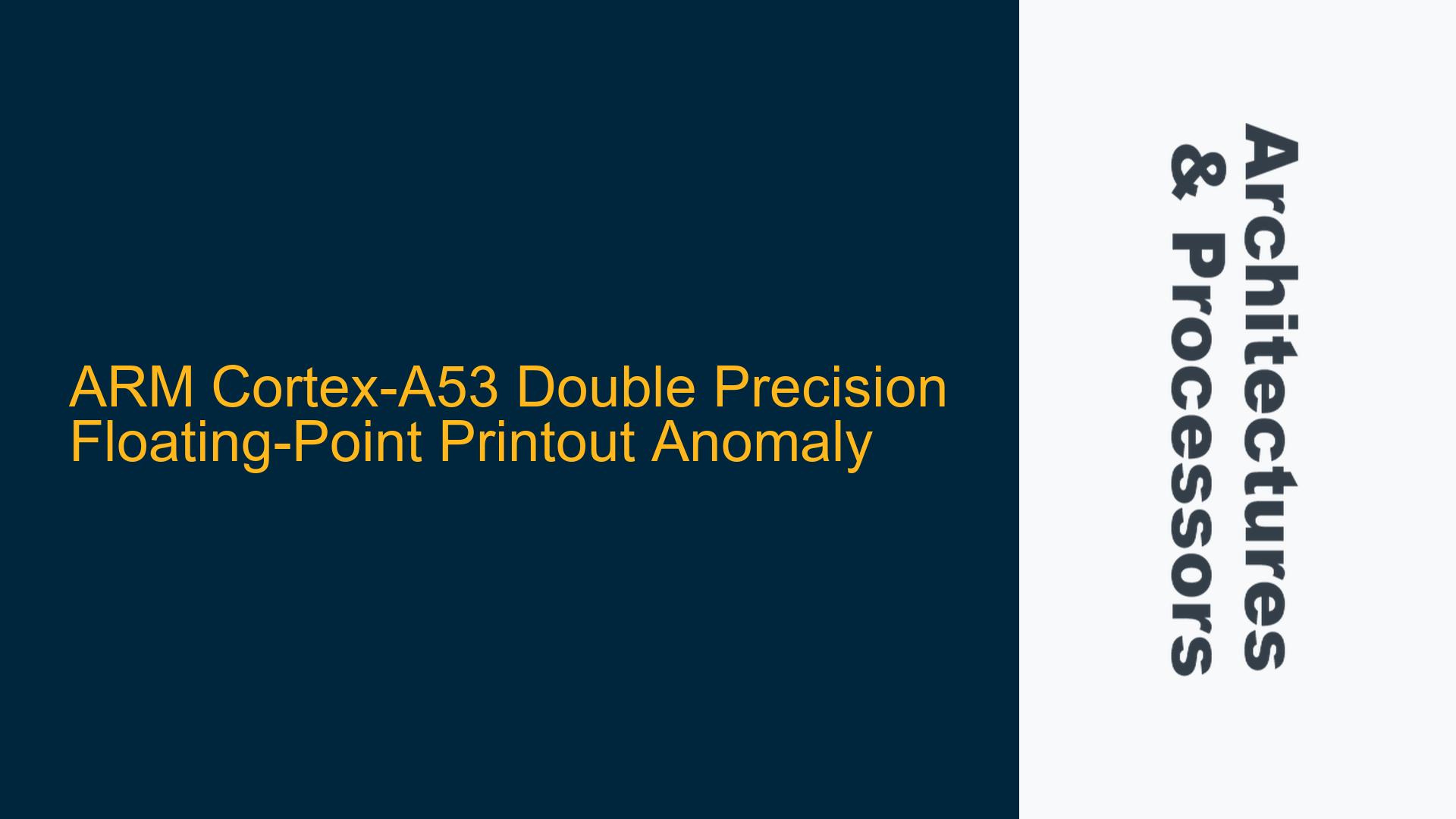ARM Cortex-A53 Double Precision Floating-Point Printout Anomaly
The issue at hand involves the incorrect printout of a double-precision floating-point value on an ARM Cortex-A53 core. Specifically, when printing a negative double value using the %e format specifier, the Cortex-A53 incorrectly outputs the value as positive, whereas the same code running on an ARM Cortex-M4 core produces the correct negative output. This discrepancy occurs despite the hexadecimal representation of the double value being identical across both cores, as confirmed by debugging tools. The problem is isolated to the printout functionality and does not affect the actual storage or computation of the double value.
The Cortex-A53 is a 64-bit ARMv8-A core, while the Cortex-M4 is a 32-bit ARMv7-M core. Both cores support double-precision floating-point operations, but their handling of floating-point data, particularly in software layers such as the C standard library, may differ due to architectural and implementation-specific nuances. This issue is particularly relevant in scenarios where cross-platform consistency is critical, such as validation testing for benchmarks like CoreMark-Pro.
Floating-Point Format Specifier Mismatch and Architectural Differences
The root cause of this issue lies in the interaction between the floating-point format specifier used in the printf function and the underlying floating-point handling mechanisms of the ARM Cortex-A53 and Cortex-M4 cores. The %e format specifier is intended to print floating-point values in scientific notation, but its behavior can vary depending on the implementation of the C standard library and the floating-point unit (FPU) of the target architecture.
The Cortex-A53’s FPU, which complies with the IEEE 754 standard for floating-point arithmetic, may handle certain edge cases or formatting requirements differently compared to the Cortex-M4’s FPU. Additionally, the C standard library implementation for the Cortex-A53 might not fully account for the architectural differences in floating-point representation and formatting, leading to the observed discrepancy.
Another potential cause is the alignment and padding of double-precision floating-point values in memory. While the hexadecimal representation of the value is the same, the way the value is interpreted during the formatting process could differ due to alignment requirements or padding differences between the two architectures. This could lead to subtle bugs in the formatting logic, particularly when dealing with negative values.
Resolving Floating-Point Printout Discrepancies and Ensuring Cross-Platform Consistency
To address this issue, the following troubleshooting steps and solutions can be implemented:
-
Verify the C Standard Library Implementation: Ensure that the C standard library used for the Cortex-A53 is fully compatible with the ARMv8-A architecture and correctly handles double-precision floating-point formatting. This may involve updating the library to a newer version or using a different implementation that is known to work correctly on the Cortex-A53.
-
Use Alternative Format Specifiers: Experiment with different format specifiers to determine if the issue is specific to the
%especifier. For example, using%for%gmight produce the correct output. While this is not a permanent solution, it can help identify whether the problem is isolated to the%especifier. -
Implement Custom Formatting Logic: If the issue persists, consider implementing custom formatting logic for double-precision floating-point values. This approach involves manually converting the double value to a string representation, ensuring that the correct sign and magnitude are preserved. While this adds complexity, it provides full control over the formatting process and guarantees consistent behavior across different platforms.
-
Check Compiler Flags and Optimization Settings: Ensure that the compiler flags and optimization settings are consistent across both platforms. Differences in optimization levels or floating-point handling flags could lead to unexpected behavior. For example, enabling strict IEEE 754 compliance or disabling aggressive optimizations might resolve the issue.
-
Debugging and Profiling: Use debugging tools to step through the
printffunction and examine the intermediate values during the formatting process. This can help identify where the discrepancy occurs and provide insights into potential fixes. Profiling the code on both platforms can also reveal performance differences that might be related to the issue. -
Consult ARM Documentation and Community: Review the ARM architecture reference manuals and community forums for any known issues or errata related to floating-point handling on the Cortex-A53. ARM frequently releases updates and patches for their cores, and there may be a documented solution or workaround for this specific problem.
By following these steps, the floating-point printout discrepancy can be resolved, ensuring consistent behavior across different ARM cores and maintaining the integrity of validation tests and benchmarks.






